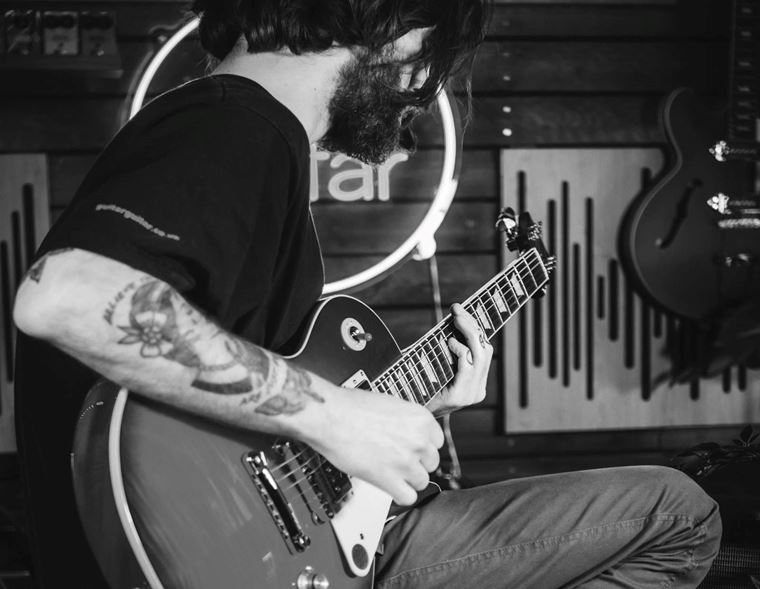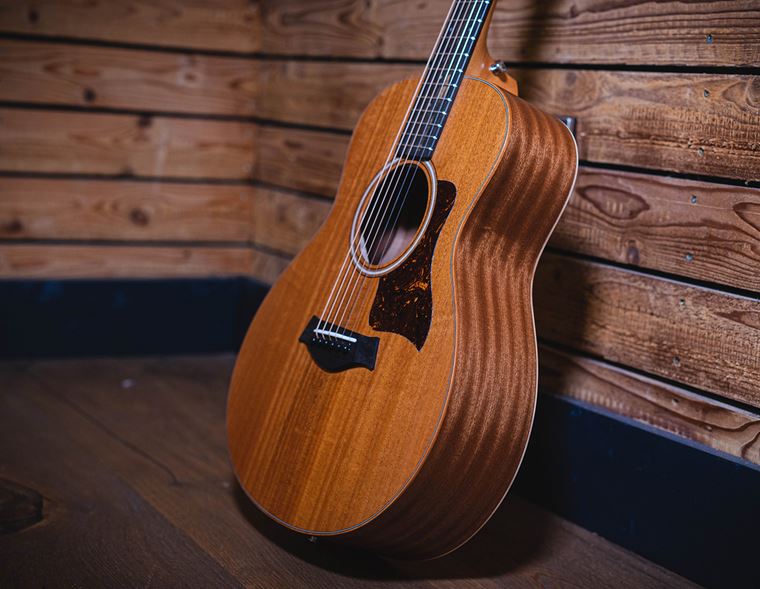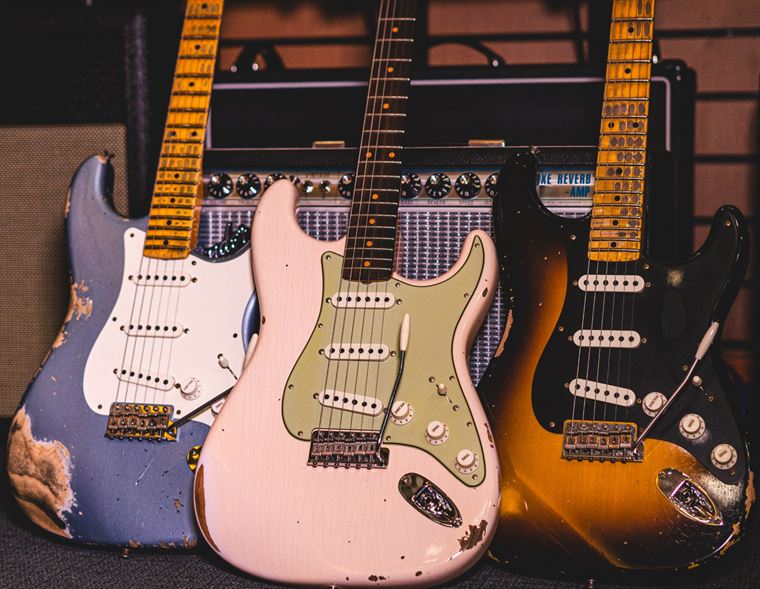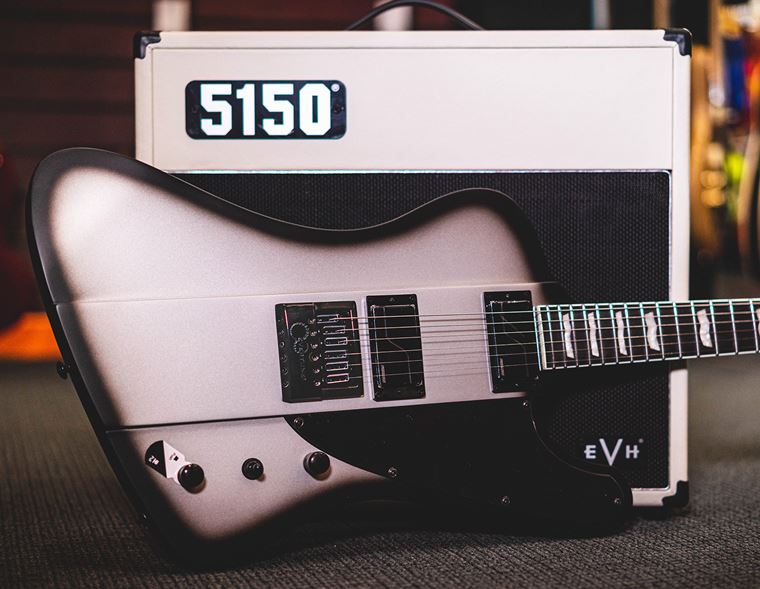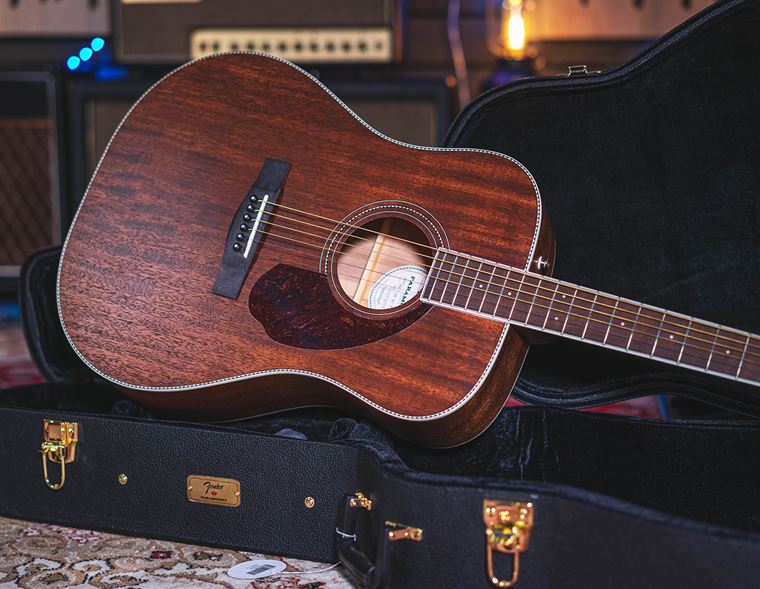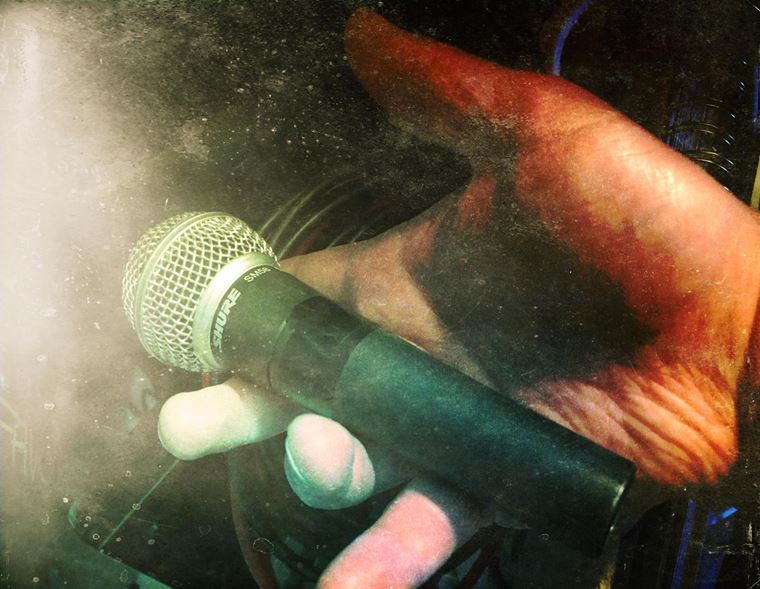Top Ten Classic Synthesizers
Published on 28 March 2024
The world of the synthesizer is very similar to that of electric guitars in one specific way: a few indisputable classics hold a huge influence over every subsequent model. With synths, it’s fair to say that technology itself plays as large a part in the new models as notions of design and so on, unlike with guitars where technology is somewhat to the side of things. Our favourite guitars are all 70 years old and do roughly the same things: our favourite synthesizers have all brought something new to the table, be it sonically or in terms of features.
Top Ten Classic Synthesizers
Today, I’m happy to wear my synth geek hat and dive into a subject I’m highly interested in: classic synthesizers! I’ve compiled a top ten filled with the most significant pieces of analog and digital gear, with an eye on not only how innovative they were, but how much they shaped and affected popular music.
There are obviously more than ten notable synthesizers out there, so I’ve had to whittle a list that focuses more on the golden eras of the 70s and 80s, when technology grew cheaper and was more widely used by artists. I’ll try to make the list flow in a way that’s largely - yet not strictly - chronological. I feel that it’s helpful to understand the progression of sounds and technology in a kind of linear context.
More importantly, it’s an excuse to line up some supremely excellent music! So, join my starship as I take an odyssey into the glittering world of classic synthesizers…
Contents
Sequential Circuits Prophet 5 (and Prophet 10)
MiniMoog
Bob Moog (pronounced ‘mow-g’) is as titanic a figure for synthesizers as Leo Fender is for guitars. He created instruments and sounds that established a whole vocabulary for keys players, and he invented an overall design - a wooden enclosure with an angled panel full of control knobs and switches - that became the de facto way to construct a synth.

So, the obvious history maker here is the Minimoog, a fat sounding monosynth with a filter section with a famously wide range. The Miminoog started a revolution by being relatively portable, easy to program and enjoyable to play. Keys players could sit one on top of their organ or pianos and enjoy a whole new universe of sound.
Moog subsequently made a huge number of synth models, all hand-built in North Carolina. The Polymoog is a revered classic too, giving keys players a more symphonic sound thanks .
Yamaha CS80
Mention the phrase ‘Yamaha CS80’ to certain people and their eyes will glaze over in silent reverie, such is the esteem placed on this synth. It’s large, it’s astoundingly heavy and it never liked staying in tune, but once Vangelis used one for the Oscar-winning Chariots of Fire score and the super-influential Blade Runner soundtrack, the synth world was never the same.
It’s still the high watermark for those futuristic, skyscraping sounds all these decades later (it was released in 1977), thanks in part to a ‘ribbon’ controller above the keyboard that allowed some supremely expressive performances: the player could mimic elements of how a string or brass player would utilise their instrument, opening the CS80 up as a unique voice in synthesis.
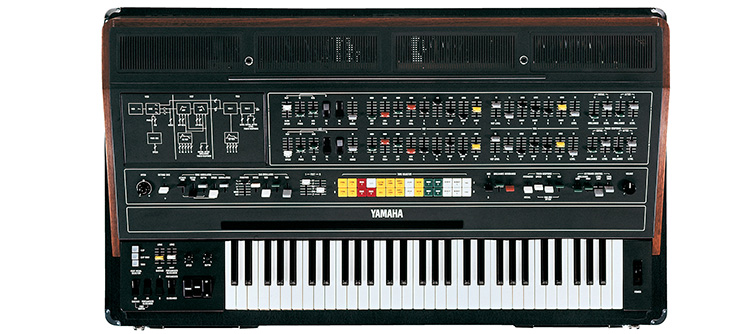
Aside from Vangelis, the CS80 has been used by Kate Bush, Peter Gabriel, Hans Zimmer and many more artists.
Sequential Circuits Prophet 5 (and Prophet 10)
Hand-made in San Francisco, Dave Smith’s classic Prophet 5 synth was the world’s first polyphonic analog synth to have a programmable memory. We take stuff like that for granted today, but the inability to save your created sounds was a source of huge compromise up until Sequential created this in 1977, and it made the Prophet hugely successful.
It didn’t hurt that it also sounded absolutely stellar, with top artists such as Kraftwerk, Phil Collins, Michael Jackson and Madonna taking advantage of its rich, soulful sound. Peter Gabriel even refers to it as his ‘old warhorse’!
Interestingly, Sequential Circuits actually created the follow-up Prophet 10 model first, but overheating issues led the team to dismantle half of the synth’s inners, leaving five notes of workable polyphony instead of ten. The Prophet 10 eventually did happen, once they'd ironed out their issues.
As a soundtrack keyboard, the Prophet 5 (and 10) have been pretty iconic, too: Vangelis used these in addition to his beloved CS80 for Blade Runner, John Carpenter used Prophets on several of his movie scores and Brad Fiedel used a Prophet 10 to create the amazing soundtrack to The Terminator.
Fairlight CMI
The famous Fairlight is kind of like the Klon Centaur of the synth world: mythical, expensive, used by top professionals, but nowadays you can achieve what it did pretty easily.
That said, for its time, the debut of the Fairlight was like the sky opening and alien technology floating through. It was a complete package: a computer screen, a keyboard and even a pen for drawing waveforms, with sampling technology that was absolutely cutting edge. The Fairlight could mimic existing instruments, it could create & manipulate samples, and it could do a lot of this magic in real time.
This was beyond next-level for 1979, and as a result, was prohibitively expensive. I remember chatting with Joy Division’s Peter Hook about the Fairlight and he said it was something like £40k in the early 80s, which would’ve bought you a pretty fancy house back then! Needless to say, only certain musicians were able to afford one, and interestingly, we see some similar names cropping up again from earlier in this blog. Peter Gabriel was an early adopter of the technology, using it on his solo albums for both rhythmic sounds and lead instruments. Kate Bush made particularly famous use of it throughout her 80s career, and perhaps never more clearly than in Running Up That Hill. Her Never For Ever album from 1980 was actually the first studio album released that included the Fairlight.
The Fairlight was a huge 80s thing, with Prince, Jan Hammer (Miami Vice, see below for Fairlight percussion in action), Duran Duran, Ministry and Stevie Wonder all adding to the catalogue of new, unheard-of sound that was being made thanks to the technology.
Nowadays, we can all do it with a laptop, but it’s hardly as much fun, is it?
Roland Jupiter-8
Japanese giant Roland is a brand that we’ll be seeing a fair bit of in this article, such is their overpowering influence in the world of electronic music. The Jupiter range of keyboards began with 1981’s Jupiter-8. This is still the one most lusted after by synth fans, and it's most definitely on a bunch of your favourite recordings: everyone from the Pet Shop Boys to Giorgio Moroder, Marvin Gaye to Duran Duran had one of these!
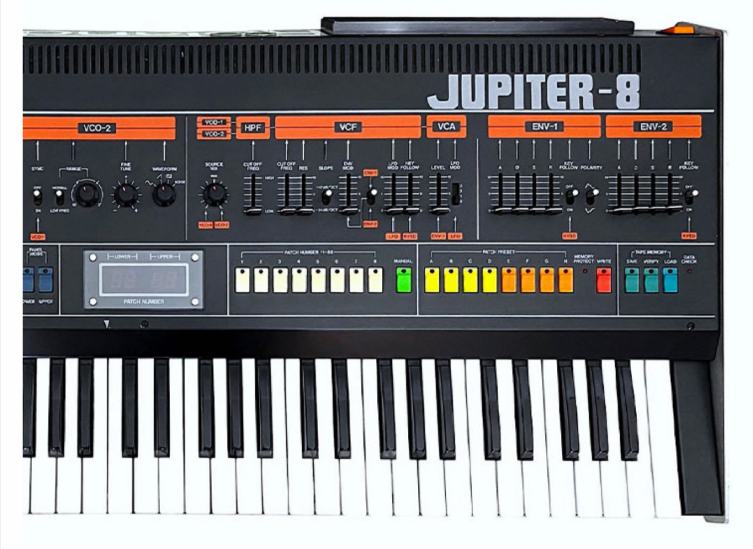
The Jupiter-8 - or JP-8 if you prefer - had 8 voices of polyphony, which allowed the already lush string sounds to become positively heavenly. Fully analog, the Jupiter 8 was ‘pre-MIDI’ and - typically for Roland - had plenty of unique features onboard such as the ability to infinitely sustain the onboard arpeggiator, and also to stack up the unit’s 16 oscillators onto a single note for a hugeness that was basically unavailable anywhere else.
Roland TB-303 Bass Line
1981 was evidently a good year for Roland! As we’ve seen, they brought us the mighty Jupiter-8 synthesizer, but there was a smaller, simpler device released that year that perhaps made an ever bigger splash in the music world: the TB-303 Bass Line.
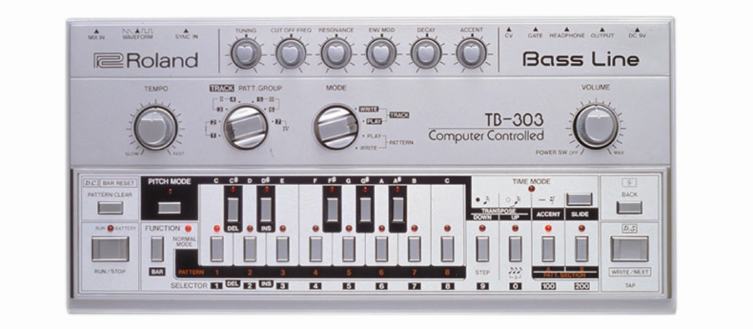
Known universally as the ‘303’, this small synth is one of the most distinctive sounding, useful, and beloved pieces of gear in electronic music.
The 303 was originally designed to mimic a bass guitar, and in regard, it was woefully unsuccessful. Nobody was interested, since it sounded absolutely nothing like a bass guitar!
However, the single oscillator sawtooth wave sound that it did produce was, in a different context, absolutely excellent: rough, abrasive and squelchy in equal measures. Techno artists from 80s Detroit instantly say the potential in the not only the 303’s brilliantly buzzing sound, but also the rigidity of the step-sequencing method of note entry: you didn’t plat notes in real-time, but instead programmed lines and riffs in advance, allowing the part to repeat itself in a loop whilst the user worked the 303’s filter cutoff control to shape those characteristic tones.
The 303 has been used in techno, house, acid, gabber and all types of electro music. It’s a timeless genre mainstay, a stun gun to employ in your music when it needs that authentic techno edge.
Roland Juno 6/106
Nowadays, the name ‘Juno’ is used for affordable synth workstations. Back in 1982, though, it was the name of one of the coolest sounding and most reliable analog polysynths on the planet.

The Juno 6 used digitally controlled oscillators to basically correct the analog waveform whenever it drifted out of tune, which it inevitably would. The innovation allowed the synth - which sounded great - to remain in tune for a full gig or session. Again, we take tuning stability for granted these days, but in the early 80s, this was huge!
Other important features of the Juno-6 were an onboard arpeggiator and an ‘ensemble’ Chorus effect, from the brand who made the most famous chorus pedal in the world, of course! No wonder musicians loved the Juno!
Two years later came the Juno-106, which added the all-important MIDI functionality in addition to the patch storage that the Juno-6 already had. It swapped out the arpeggiator for a portamento effect, which allowed subtle or dramatic ‘slides’ between notes.

In terms of who used a Juno, it’s more a question of who didn’t, particularly in the 80s! It was in every pop song from Wham! and A-ha to Erasure and Depeche Mode.
Yamaha DX-7
If there’s one keyboard that’s as ubiquitous to the 80s as the Juno, it’s the Yamaha DX7. Introducing an entirely different way to make sound, the DX7 has enjoyed a lifespan that has seen its sound go from being the height of fashion to hopelessly out of date, and then back into the ‘timelessly great’ category.
So, the DX7 is actually entirely different from the likes of the Juno-6 or the Jupiter-8. Instead of being analogue and using subtractive synthesis (the traditional means of taking an initial waveform and ‘sculpting’ it via subtracting elements of the sound), the DX7 was completely digital and using FM (frequency modulation) synthesis to achieve an entirely new palette of sounds. Bells, angular sounds, chimes and more were now available, as well as strings and pad sounds that had an altogether different timbre.

The DX7 was released in 1983 and proved to be one of the best-selling keyboard instruments of that decade. It was tricky to program, so most folk didn’t even bother, relying on the selection of presets for their sounds.
Here’s an amazing statistic for you: in 1986, a staggering 40% of the year’s US number one hits had a DX7 on them! In terms of popular music, it’s hard to underestimate the impact the DX7 had at the time. Although its sounds inevitably went out of date, a recent resurgence of appreciation for FM synthesis in general has allowed these sounds to now rank alongside those made by the likes of the Minimoog.
Roland D-50
For some people, the outstandingly popular Roland D-50 will forever be the ‘Enya keyboard’. Released in 1987, this was actually Roland’s first fully digital synth. You could look at it as a response to Yamaha’s market-dominating DX-7, but it’s really not the same thing at all.

The D-50 saw Roland taking a typically innovative approach to sound: the traditional subtractive-synthesis waveforms (created digitally this time with a process called Linear Arithmatic) were combined with sampled waveforms to produce sounds that were next-gen in their ‘realness’. Those pizzicato string stabs at the beginning of Enya’s ubiquitous Orinoco Flow are the perfect example: nothing prior to this (outside of perhaps a carefully programmed and sampled Fairlight CMI) was able to deliver such a level of realism.
The D-50 excelled in push strings, pads, percussion sounds and tones that were even more obviously manipulated. Unlike the DX7, the D-50 has never gone completely out of fashion, but improvements in sound and functionality eventually saw it becoming old hat. Now, though, as with the Yamaha, it’s seen as a legitimate classic.
PPG Wave
PPG/Waldorf had yet another entirely different way of creating sounds: wavetable synthesis. Put simply (very simply) wavetable synthesis allowed the musician to create a sound that used a number of different waveforms connected in a sequence. You chose the waveforms you wanted to use and laid them on the ‘wavetable’, and when you pressed a note, the sound would be created using this customised waveform.
The technology for this actually debuted in 1979, but 1981 saw the release of the PPG Wave, which combined that digital tech with analog amplifiers and filters. There was also a powerful onboard sequencer that allowed plenty of real-time changes to be made to the sound, resulting in rich, complex sounds that were also unpredictable to the audience. Tangerine Dream loved it, as you can hear beautifully in the music from Ridley Scott's Legend, below.
PPG folded in 1987 (the Wave was expensive and therefore a victim to the all-conquering Yamaha DX7) and became Waldorf, who carried the technology through into their famous MicroWave synth.
Korg M1
From the late 80s to the mid 90s and beyond, Korg had the synth market dealt with. The M1 - as important to the rave scene as the DX7 was to 80s pop - is one of those modern classics that must be due a critical reappraisal soon!
Superficially similar to the Roland D-50, the Korg M1 was able to give users both a range of realistic ‘acoustic’ sounds and the squelchy, buzzy tones beloved of the dance scene. It had MIDI, it had an onboard sequencer and it had a bunch of effects. It was basically a full production tool built into a keyboard with thousands of sounds.
In the early 90s, most popular pop and dance-adjacent music used an M1. The distinctive organ and piano sounds are on a million house songs, and everyone from The KLF to Fluke used one of these.
Access Virus TI2
My last choice for classic synth is a modern one, albeit one that’s now 15 years old. Access - the same company who make the Kemper Profiler digital guitar amps - released the first Virus in 1997, in that first wave of analog-modelling technology that included the amazing Nord Lead.
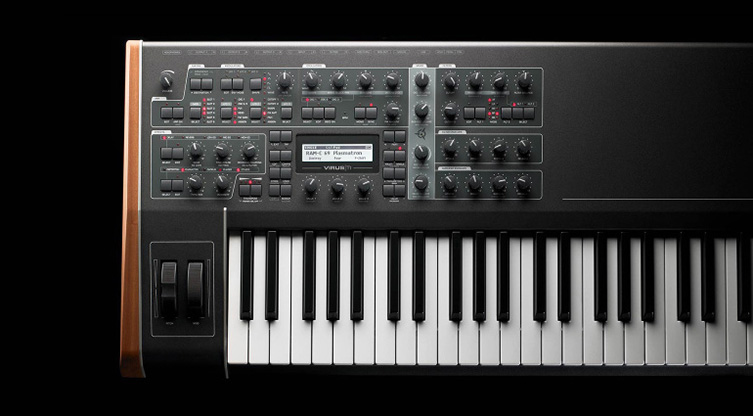
The Access Virus TI2 was particularly amazing for a number of reasons. It had a fatter, warmer and deeper sound than anything else; it had a dizzying level of control (40+ distortion algorithms, for one thing) but was never too complicated to control; and it could quite easily sound like a host of classic synthesizers whilst always also offering its own sound. It was hugely impressive, and that’s perhaps why the TI2 model hadn’t required any updates in the 15 years of its production.
In fact, Access/Kemper only announced its discontinuation in February, with no word on a successor. We wait with baited breath!
An Odyssey of Sound
I left out loads of classics, didn’t I? The ARP Odyssey, ARP 2600, EMS ‘suitcase’ synth, Novation Bass Station, and even the humble Microkorg: all of these are important, significant synthesizers and deserve to be included, but that’s the nature of top tens, sadly. As it was, I already have twelve synths in my main list!
Hopefully though, you’ll agree that all of the models which did end up in the shortlist were worthy of their places. The world of synthesizers is a vibrant, fascinating one, and there’s lots to take onboard and enjoy. Whether you’re an analog purist, an FM maniac or a lover of all styles, there’s loads to love with these classic synthesizers.
Click to View our Current Selection of Synthesizers




